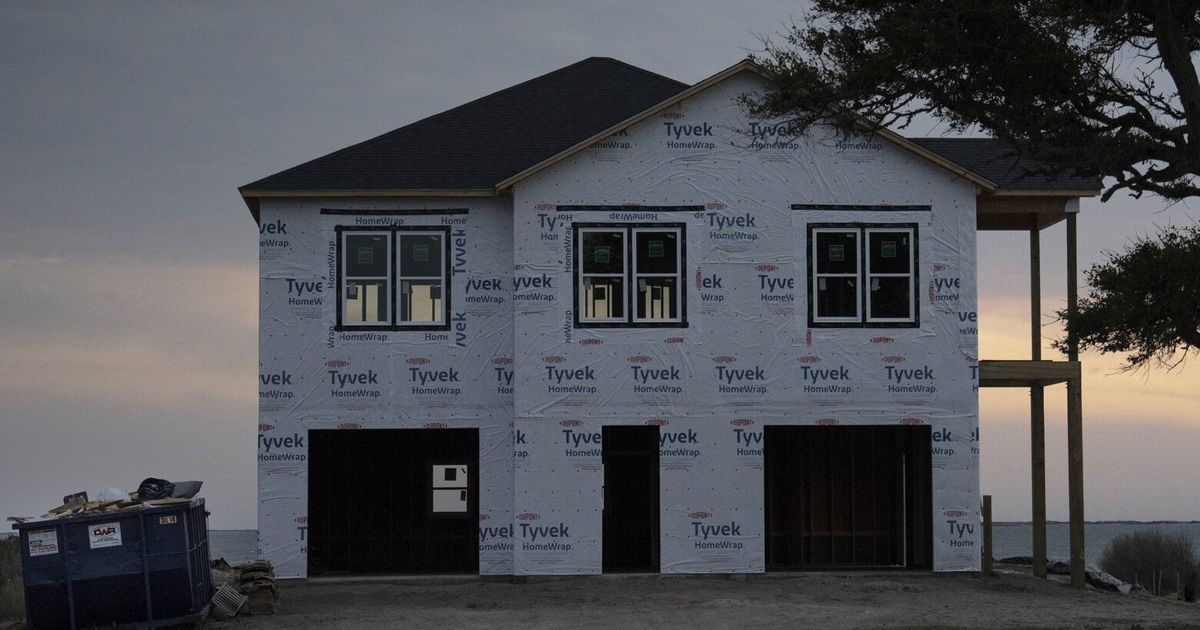
The Federal Emergency Management Agency will take new steps to ensure that the structures it funds — including schools, hospitals, police stations, libraries, sewage treatment plants and bridges — are protected from flooding.
The agency said Wednesday that projects constructed with FEMA money must be built in a way that prevents flood damage, whether by elevating them above the expected height of a flood or, if that’s not feasible, by building in a safer location. The rule also makes it clear that building decisions must reflect risks now and also in the future, as climate change makes flooding more frequent and severe.
“We are going to be able to put a stop to the cycle of response and recovery, and rinse and repeat,” Deanne Criswell, the FEMA administrator, said during a call with reporters.
The new rule will “enhance resilience in flood-prone communities, by taking future flood risk into consideration when we rebuild,” she said.
Climate resilience experts have long called for FEMA, along with other federal agencies, to ensure that federal tax money isn’t wasted on vulnerable projects.
Flood damage is likely to reach $40 billion in average annual losses this decade, according to Chad Berginnis, executive director of the Association of State Floodplain Managers.
“We’re on this trajectory of losses doubling every decade, which should be scary as hell,” Berginnis said. “We can’t ignore this problem anymore.”
The history of the new rule demonstrates the complicated politics of managing flood risks, as well as the slow pace of change when it comes to federal agencies.
FEMA first proposed the rule, called the Federal Flood Risk Management Standard, in 2016 during the Obama administration. The proposal generated intense opposition, particularly from homebuilders who warned that new restrictions would lead to higher construction costs, according to Roy Wright, who ran disaster mitigation programs for FEMA at the time.
Asked about the rule, a spokesperson for the National Association of Home Builders pointed to comments that the group submitted to FEMA in December, in which it warned that the regulation would create confusion and urged its withdrawal.
A few months after Donald Trump became president, FEMA withdrew its proposal. When President Joe Biden took office, he directed federal agencies to once again set rules to protect the projects they funded in flood zones. FEMA again began the process of drafting a rule.
“I am grateful to President Biden and the entire Biden-Harris administration for finally helping us get this across the line,” Criswell said Tuesday.
The new rule follows a Supreme Court decision last month that is expected to make it easier to challenge federal regulations. Asked about the risk that the rule could be overturned, Criswell said that she believed her agency has the legal authority to impose the new standards.
Daniel Kaniewski, a former deputy administrator for resilience at FEMA, said the nearly decadelong process is a reminder that the federal government moves slowly, a challenge when it comes to a climate crisis that is quickly unfolding.
But Rob Moore, director of the flooding solutions team at the Natural Resources Defense Council, a nonprofit organization, said that FEMA has moved faster than most other federal agencies that are still building projects in ways that make them increasingly vulnerable to flood damage. The only other agency to issue a final rule on flood risks is the Department of Housing and Urban Development.
“We are spending a lot of money to build stuff that’s washing away,” Moore said. “We have to build for the world we’re going to live in 50 or 60 years from tomorrow.”
